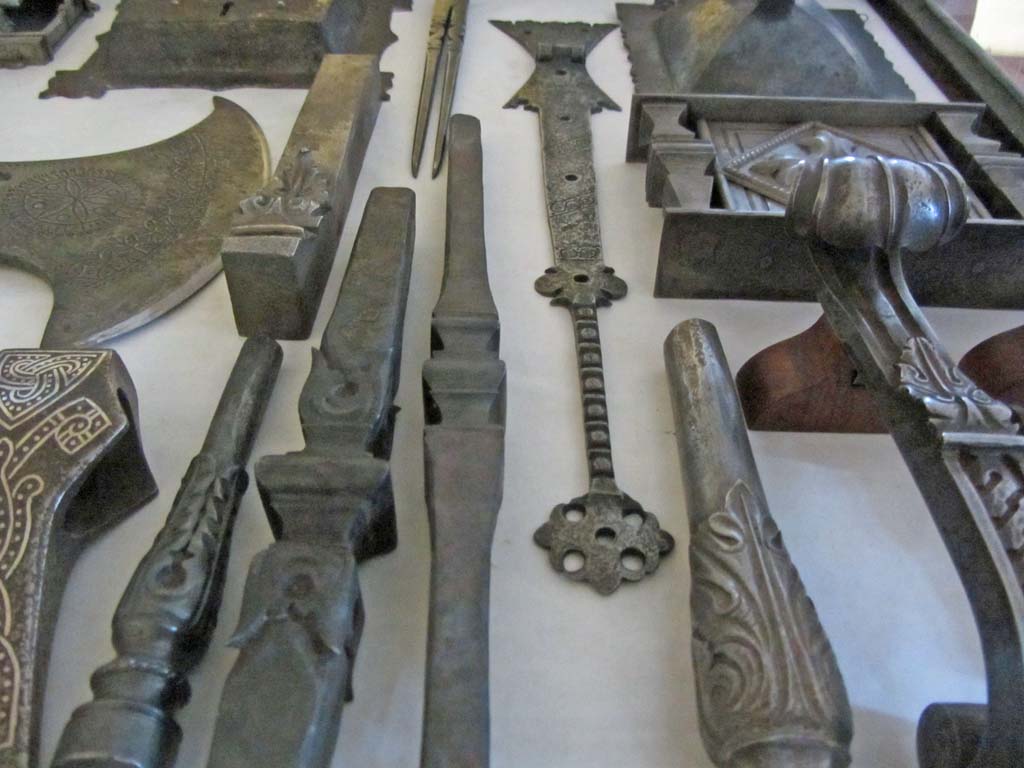I just returned from a trip into the heart of the midwest, traveling around Wisconsin and Minnesota for about ten days. The reason for the trip was to attend the Society of North American Goldsmithing (SNAG) conference that was being held in Minneapolis, MN. I was asked to speak as one of their "Emerging Artist" presenters, and spent the better part of a week catching up with old friends, meeting new ones, and enjoying being in the presence of fellow metalsmiths. On my way back from the conference I made a stop to visit Tom Latané, a blacksmith I have been looking forward to meeting for a long time.
I first saw Tom's work when I attended the 2008 ABANA conference in Memphis, TN. When I attended the conference I was relatively new to blacksmithing and had just returned from Europe, inspired by the many iron objects I had seen. On the left there is a detail of a hacksaw that Tom made which I saw at that conference. Returning to the states and seeing that someone was making the same style of decorative work was exciting and inspirational and helped me take the next step in my own work.
After many years of admiring Tom's work, I made arrangements to visit him on my way back from Minneapolis. I stopped through Pepin, WI, a tiny town on the banks of the Mississippi where Tom and his wife Catherine have their home, studio, and store front. Catherine has a studio space in the front where she works in tin, and Tom has his forge off the back of the shop. Tom does all his forging by hand, with Catherine there to strike if he needs. Around the shop are mostly tools he has made, many of which are ornamented with a very classic sensibly. The objects Tom makes range broadly, including kitchen utensils, tools for all trades, candle holders, chests, door knockers, and locks of any size and sort.
Of all the samples and techniques that I saw while visiting with Tom, some of the most intriguing work I saw were pieces that he made through extensive use of chasing. Chasing is a technique where you use punch-like hand held tools, struck by a hammer, that vary in size and shape to move metal in a very controlled manner. If you look in the pictures you can see that much of the work would have been forged first, chased hot, then further refined once it has cooled. This technique allows for the drastic but detailed movement of metal, and Tom uses this method to create everything from acanthus leaves to expressive faces.
It was a humbling experience to see Tom's shop and have the opportunity to work with him. The complexity of objects he creates with such basic tools is a testament to a simpler way of thinking and working. So often I think we can over engineer and complicate what can be done with more basic means.
Thanks to Tom and Catherine for being such generous hosts. Be sure to go see more of their wonderful work here :







